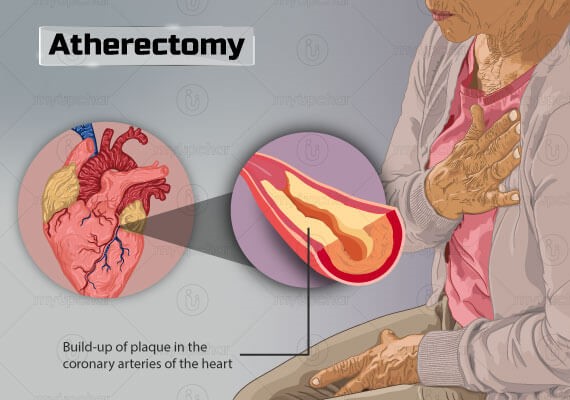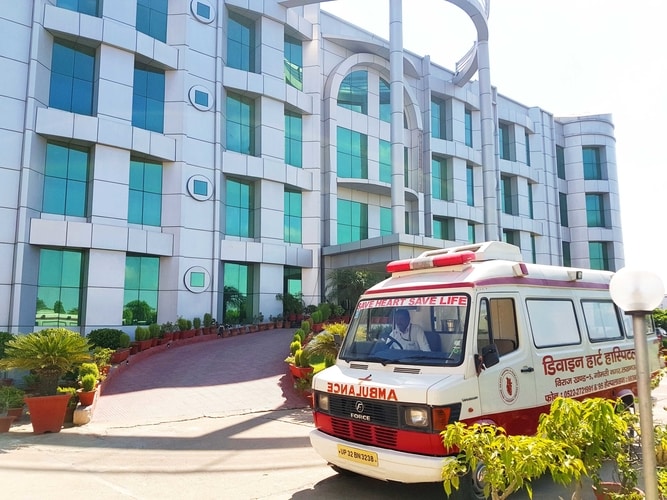
Atherectomy: What is it, Types, Procedure and Recovery.
Atherectomy
An atherectomy is a surgery to treat heart attack , a procedure to remove plaque from an artery (blood vessel). Removing plaque makes the artery wider, so blood can flow more freely to the heart muscles. In an atherectomy, the plaque is shaved or vaporized away with tiny rotating blades or a laser on the end of a catheter (a thin, flexible tube).
Usually, Angioplasty and stents are performed before atherectomy, this surgery is used to treat peripheral artery disease and coronary artery disease. Plaque (fatty deposits collection of fat and cholesterol) build up in your arteries is called atherosclerosis, it is a heart disease for which treatment of Atherectomy is given.
Types of Atherectomy
Mainly, there are four types of atherectomy in heart attack treatment surgeries based on types of its devices: orbital, rotational, laser, and directional.
- Orbital atherectomy-this is the latest technique that uses a high-speed rotational device with modified tip technology, in which the cutting tip spins at high speed and grinds the plaque into a powder.
- Rotational atherectomy- the cutting tip spins at high speed and grinds the plague into a powder then it is washed away into the bloodstream.
- Laser atherectomy- in this device the catheter emits high energy laser to vaporize the plague material.
- Directional Atherectomy-in this device the blade shaves of the plague and the plague is collected separately in the catheter and then removed.
Procedure of Atherectomy
The procedure of atherectomy is performed in a place called cardiac catheterization lab. Before the procedure, the patient receives calmative to help him or her relax. After that a catheter is gently inserted in an artery, usually in the groin or upper thigh area. It’s then guided through the blood vessel toward the heart. When it’s in place, dye is injected through the catheter and into the coronary arteries. An X-ray is taken to help the physician pinpoint the area that is blocked by plague. The physician then uses tiny blades or a laser, attached to the (device) end of the catheter, to vaporise plaque.
After the surgery, an angioplasty or stent (other surgeries of open-heart surgery) procedure is sometimes performed. Once the treatment is complete, the catheter is removed. Most patients go home after about 24 hours.
already had angioplasty and stents, but who still have plaque blocking the flow of blood.
Recovery
Usually after a heart attack one can begin normal activities after a few weeks of atherectomy procedure. Doctors always advise some specific guidelines for faster recovery of patients one should always try to stick to the guidelines provided by the doctor. Atherectomy usually provides good relief to the patient having symptoms of atherosclerosis. Your doctor will discuss the outcomes of the procedure with you. The patient has to try to live a healthy lifestyle unless atherosclerosis can recur. There are typically no side effects from the treatment.
Atherectomy usually provides good relief to the patient having symptoms of atherosclerosis. Your doctor will discuss the outcomes of the procedure with you. The patient has to try to live a healthy lifestyle unless atherosclerosis can recur. There are typically no side effects from the treatment.
Remember that your doctor is a partner in your recovery, so don’t hesitate to ask them questions. Divine Heart & Multispeciality Hospital offers different specialties in cardiology, cardiovascular surgery and many more, Book an appointment with a cardiologist.


